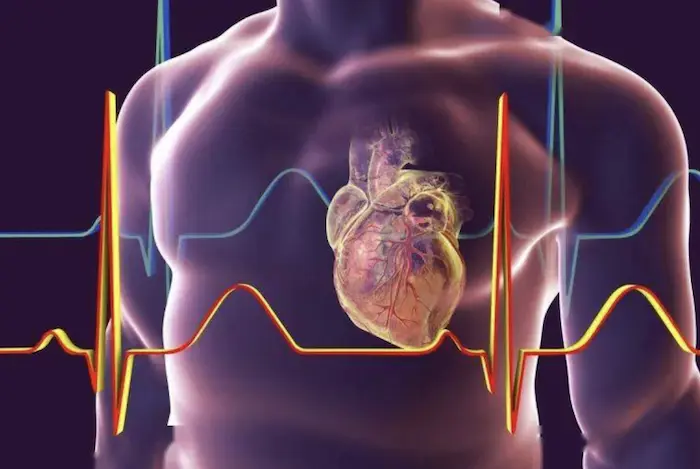Bradycardia is a condition where the heart rate is slower than normal. A normal adult resting heart rate ranges from 60 to 100 beats per minute. When the heart rate drops below 60 beats per minute, it is called bradycardia. This can occur naturally in some healthy people, especially athletes. However, it can also signal an underlying health issue.
When Is a Slow Heart Rate a Concern?
Not every case of bradycardia is dangerous. It becomes a concern when the heart cannot pump enough oxygen-rich blood to the body. This can cause symptoms and lead to serious complications.
Common Symptoms of Bradycardia
Recognizing the Signs
People with bradycardia may experience:
- Fatigue or weakness
- Dizziness or lightheadedness
- Shortness of breath
- Fainting or near-fainting spells
- Chest pain
- Memory problems or confusion
In severe cases, bradycardia can cause cardiac arrest if the heart stops beating effectively.
What Causes Bradycardia?
Intrinsic Causes (Problems Within the Heart)
- Sick sinus syndrome (malfunction of the heart’s natural pacemaker)
- Atrioventricular (AV) block
- Heart attack (especially in the inferior wall)
- Congenital heart defects
- Inflammation or infection (e.g., myocarditis or endocarditis)
Extrinsic Causes (External Influences)
- Use of medications such as beta-blockers or calcium channel blockers
- Electrolyte imbalances (especially potassium or calcium)
- Hypothyroidism
- Sleep apnea
- Hypothermia
Is Bradycardia an Emergency?
Situations Where Bradycardia Is Not an Emergency
In many people, especially athletes, a slow heart rate can be normal and healthy. It becomes an issue only if symptoms appear or if the bradycardia is due to a serious cause.
Emergency Situations Requiring Immediate Medical Attention
Bradycardia is an emergency when it causes:
- Fainting or syncope
- Shortness of breath at rest or during mild activity
- Chest pain
- Confusion or altered mental status
- Severe fatigue
If any of these symptoms occur, seek emergency care immediately. Delayed treatment can lead to heart failure or sudden cardiac arrest.
How Bradycardia Is Diagnosed
Initial Clinical Evaluation
Doctors begin with a physical exam, medical history, and review of symptoms. They may ask about medications, past illnesses, and lifestyle habits.
Diagnostic Tests
- Electrocardiogram (ECG): Measures the heart’s electrical activity
- Holter monitor: A portable device worn for 24–48 hours
- Event monitor: Worn for several weeks to catch occasional episodes
- Blood tests: Check for thyroid function and electrolyte levels
- Imaging: Such as echocardiograms to assess heart structure
Treatment Options for Bradycardia
When No Treatment Is Needed
Some cases require no intervention. If the heart rate is slow but no symptoms exist and tests are normal, treatment may not be necessary.
Medical Treatment
- Adjusting medications: Stopping or reducing doses of drugs that slow the heart
- Treating underlying conditions: Like hypothyroidism or sleep apnea
- Electrolyte correction: Restoring balance in potassium, sodium, or calcium
Pacemaker Implantation
For severe bradycardia or complete heart block, a pacemaker may be required. It is a small device implanted under the skin to help regulate the heart’s rhythm. It sends electrical impulses to maintain a normal rate.
Prevention and Risk Reduction
Healthy Lifestyle Choices
- Regular physical activity
- Eating a heart-healthy diet
- Limiting alcohol and avoiding tobacco
- Managing stress effectively
Monitoring and Follow-Up
Patients at risk should have regular follow-ups. Monitoring can help detect early signs and prevent complications. Wearable technology can assist with ongoing heart rate tracking.
When to See a Doctor
If you notice signs of bradycardia—especially fainting, dizziness, or confusion—it’s important to consult a doctor. Early diagnosis improves outcomes and prevents complications.
Living With Bradycardia
Managing Day-to-Day Life
Most people can live normal lives with proper management. This includes taking medications as prescribed, attending checkups, and monitoring symptoms.
Adjusting Activities
Some people may need to limit intense activities until their condition is stable. A doctor can help guide safe levels of exertion.
Potential Complications of Untreated Bradycardia
- Heart failure
- Sudden cardiac arrest
- Reduced quality of life due to fatigue or confusion
Conclusion
Bradycardia can be normal or a sign of a serious heart condition. It is not always an emergency, but when symptoms occur, urgent care may be required. With proper diagnosis and treatment, most people with bradycardia can live healthy lives. Always consult a cardiologist if you experience unusual symptoms or have concerns about your heart rate.
Related topics:


